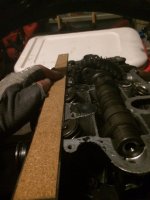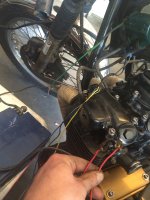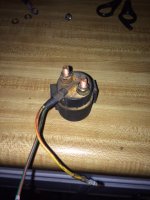crazypj
Split personality, I fake being smart
Get a straight edge and check all the valves are still in line.
Tops can get bent then the valves stick.
They still seal fine when tips are bent, guides usually nd up cracked though
If cam timing really is 90 degrees off, you will have 8 bent valves, check the positioning again
You will get low readings until motor has a few hundred miles. How did you test valves?
Water in ports kinda works, if you put it in combustion chamber,you screwed up
Tops can get bent then the valves stick.
They still seal fine when tips are bent, guides usually nd up cracked though
If cam timing really is 90 degrees off, you will have 8 bent valves, check the positioning again
You will get low readings until motor has a few hundred miles. How did you test valves?
Water in ports kinda works, if you put it in combustion chamber,you screwed up







